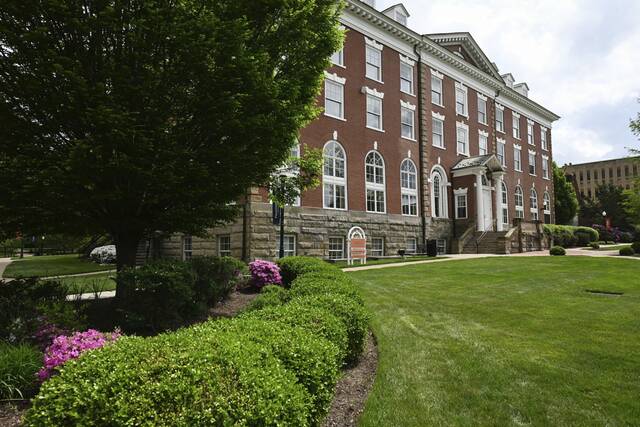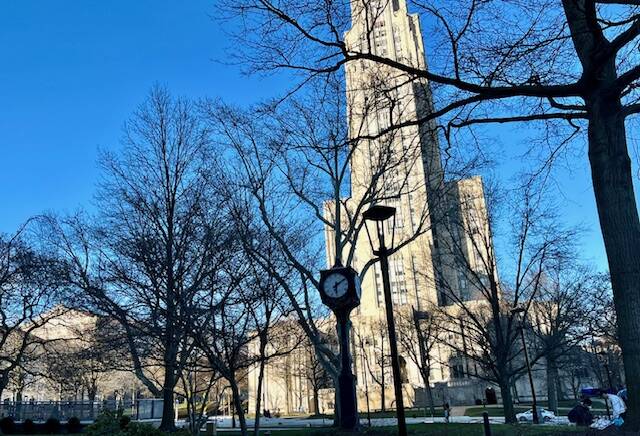Butler County is one of the last strongholds in the state for a mellow and seldom-seen rattlesnake that government agencies and a local conservation group are trying to save.
A century ago, the eastern massasauga rattlesnake called 19 areas in Pennsylvania home, living between Allegheny County and Crawford County. Today the federally threatened, state-endangered massasauga exists in only four small, isolated populations in Pennsylvania, in Venango and Butler counties and perhaps Mercer County.
The U.S. Fish and Wildlife Service recently issued a draft national recovery plan that calls for securing and creating more habitat for the snake and seeks public input. Helping develop the federal plan are the Pennsylvania Fish and Boat Commission, the Department of Conservation and Natural Resources and the Western Pennsylvania Conservancy.
The state and Conservancy have been working for many years to save the small pockets of existing populations, while working slowly and quietly to expand the snake’s territory.
The snake lives in parts of Illinois, Indiana, Iowa, Michigan, New York, Ohio, Pennsylvania and Wisconsin, as well as in Ontario, Canada, according to Fish and Wildlife. It no longer exists in Minnesota and Missouri. The snake is federally threatened because of habitat loss, collection and intentional and unintentional killing.
People generally don’t run into massasaugas. They are reclusive and live in rural, non-residential areas including marshy areas and upland fields.
There are only about 200 to 500 massasaugas left in the state, according to an estimate by Chris Urban, chief of the natural diversity section of the Pennsylvania Fish and Boat Commission.
They are hard to survey for because they like to hide and have camouflage coloring. Even experts have difficulty locating them.
“Even when they have transmitters and we are tracking them, we can’t always see them,” Urban said.
They’re small too, reaching only a little more than two feet in length with respectively tiny rattles that buzz more than rattle.
Dappled in black-and-white coloration, the snake easily fades into the background. “You could be looking down at the ground and if they are still, you’re not going to see them,” Urban said.
Ryan E. Miller, a zoologist with the Western Pennsylvania Conservancy who has been studying the snake, said, “I’ve been standing by a massasauga and not even known it.”
The snakes are targets of being taken illegally.
“These animals are so rare, and they are pretty. People steal them, sell them or keep them as pets,” Urban said.
Consequently, authorities do not reveal where most of the remaining snakes live.
The massasauga inhabited northern Allegheny County in the early 1900s but that population was wiped out when highways such as Interstate 79 and Routes 19 and 228 were built and development came to the Cranberry area, Miller said.
Given the snakes’ specialized habitat of wet prairies, there just isn’t that much type of land left because of development and the filling in of wetlands.
“The massasauga is a high-priority species,” said Charles Bier, senior director of conservation science at the Western Pennsylvania Conservancy.
The snake has been on the Conservancy’s radar for quite some time since it acquired what is now the only public land in Butler County, or the state, to host the shy and secretive rattler: Jennings Environmental Nature Center in Brady Township near Slippery Rock. The Conservancy turned over the land a number of years ago to the state Department of Conservation and Natural Resources to make it into a state park.
Since 2007, the Conservancy has purchased three properties near where the snake is known to have lived or lives in Venango County. And they are looking for suitable locations in Butler County, according to Bier.
But the task at hand is more than buying land. The Conservancy is clearing trees for openings to create the snake’s favored habitat, and then keeping it that way.
“The big challenge is you have keep the habitat open,” Bier said.
That is exactly what Jennings Environmental Nature Center is doing. It is in its second year of clearing to create habitat next to a healthy population of an estimated 100 massasaugas.
They cut and cleared about 12 acres, doubling the footprint for the snake, adding to the 18 acres of Jennings’ famous prairie ecosystem, which is also home to the blazing star native wildflower, according to Will Taylor, center manager.
“The massasauga needs two habitats close to each other — saturated grounds or wetlands for hibernation and dry uplands for foraging, which is rare,” Taylor said.
But the land has to be managed or it will get overgrown.
“That’s why the snakes are so rare,” Taylor said. “Years ago, grazing animals and fires kept areas cleared out.”
Still, even with the success and stable population at Jennings, Taylor said, “You’re lucky if you get to see one.”








